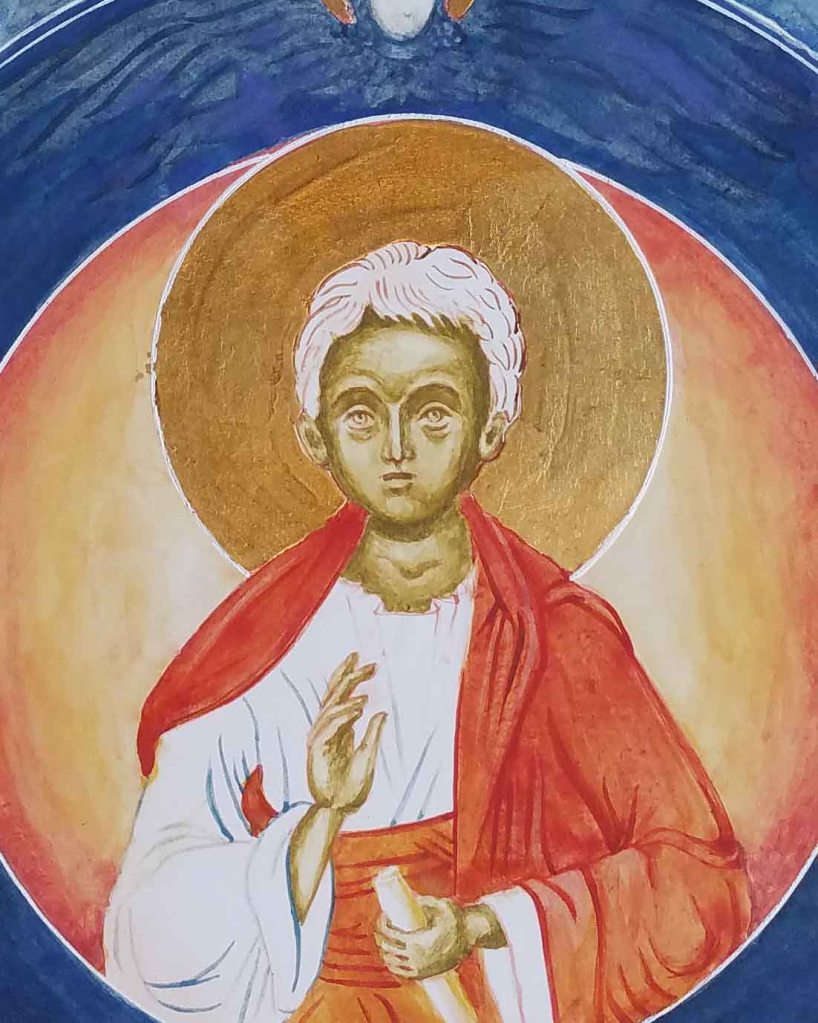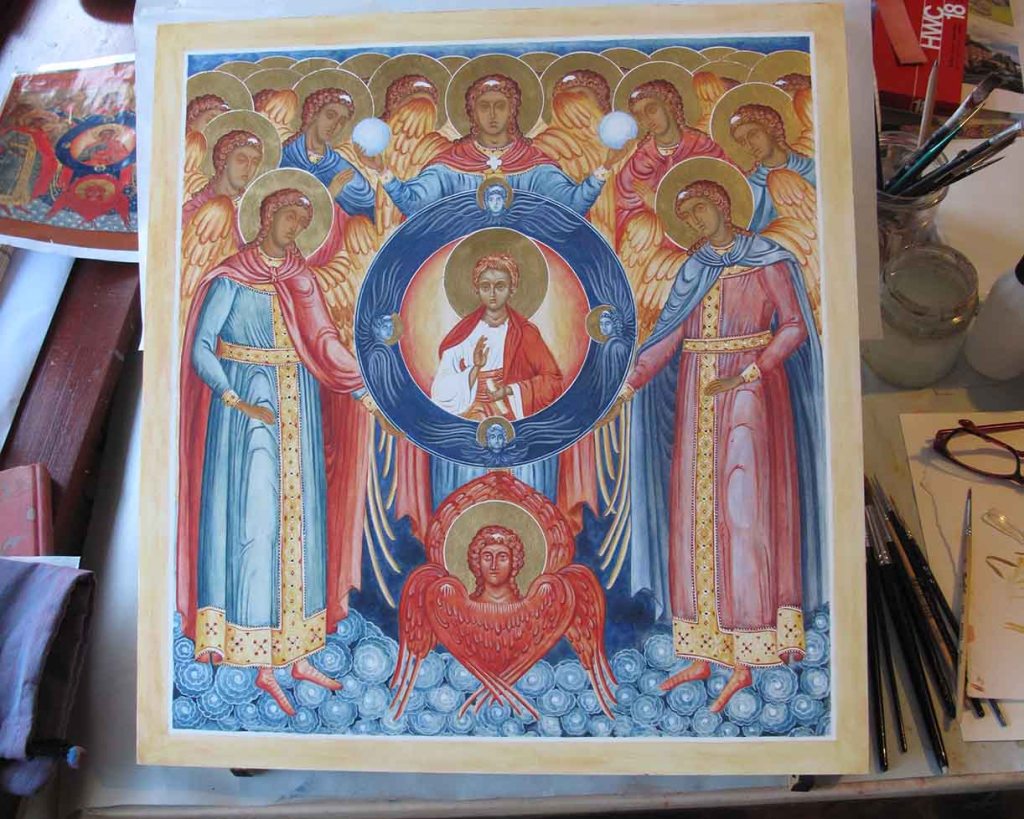At the Heart – A Child

When painting a large icon, it helps to try and progress things evenly across the panel. I’d like to show you how I approached this in this post but also want to focus on the steps taken as I painted the Christ Child at the heart of this icon. I also have some exciting news… more about that at the end of this post.
An icon with so many figures and halos can be quite tricky to paint so it’s worth pausing to think about the sequence of work. Top of the list is to remove the protective pads as soon as I can; they can leave a sticky residue if left on too long.

Before I scribe defining lines around the halos, a certain amount of painting needs to be done around them first. The halo lines are adjacent to the hair of neighbouring angels and central the blue ring also touches the halos of the Seraphim. These need to be painted and allowed time to thoroughly dry out. I’ve found that when scribing lines on paint that hasn’t dried or ‘tempered’ for a day or so tends to spread.

At the centre of this icon is the young Christ with one hand raised in blessing and the other holding a scroll. The young boy is wearing a rich vermillion cloak and sash, radiating a gold (yellow ochre maimeri) light contained in an outer circle of seraphim. I decided not to paint all the garments surrounding the ring as I thought I would be able to work fairly neatly up to these edges.

I referred back to my initial drawing to trace and transcribe the face.

I have learnt to be very careful with strong lines when underpainting a face – they can be hard to integrate later. Better to have just a few key lines in the right places as reference points to move from then shade in thin layers, building up depth gradually around the cheeks, below chin and brow, to the side of nose and under the hairline.

Below you can see I’m building up all the faces at the same time, gradually deeping the shading. I’ve used yellow ochre maimeri and a tiny dash of ivory black to give a greenish yellow underpainting. You can also use Terre Verte for underpainting faces but this pigment can be quite sticky for painting small fine facial details.

It’s worth going quite dark with the shading – it will all get held together by the membrane layers. Don’t forget to add a few glazes of your egg mix – diluted with a few drops of water and let it dry before you add the membrane. These are tiny details but they help bring it all together. The egg seals the gesso below to provide an even surface for the next layers.

I’ve used English Red Ochre light and Yello Maimeri for the membrane layers. Add just enough membranes to make out the features. At this stage I leave things for at least a week and work on other areas. This is only something I’ve learnt. The more this layer is left to temper, the easier it is for you to correct mistakes without making a hole back to the gesso. You can read about that one here!



Darkening shadows and defining the features with ochre avana.

Building up highlights with very thin layers of yellow maimeri mixed with titanium white.

All these stages are comprehensively covered in Aidan Hart’s book ‘Techniques of Icon and Wall Painting’

If at any time the highlights look too stark, add a few thin layers of French Ochre Havanna to even things out.

Finally, add whites of eyes, black pupils and eyelids, the lettering, ribbons, shell gold and fine jewel details on the garments.

Now for that exciting news… This year I’m celebrating ten years of icon painting and sharing my work here on this blog. As a big thank you for your company and comments over the years I am offering ALL my icons (including this one) in stock listed here at half price for the month of February. This offer will not be found on any social media page as it is excusive to all my readers, past icon buyers, friends and family. Postage will be added at cost and the icons will be sold on a first come first served basis – please get in touch if you would like one.
As always, thank you for reading and happy icon painting!
Ronnie 🙂